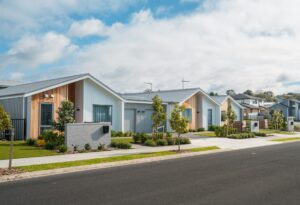 Turnkey investment properties are often advertised as the ultimate solution for rental property investors—move-in ready, low-maintenance, and a direct path to steady rental income. They may seem like the perfect investment, but hidden risks of turnkey properties can startle even experienced investors.
Turnkey investment properties are often advertised as the ultimate solution for rental property investors—move-in ready, low-maintenance, and a direct path to steady rental income. They may seem like the perfect investment, but hidden risks of turnkey properties can startle even experienced investors.
From unexpected maintenance costs to poor-quality renovation work, turnkey investment properties can bring surprises that affect your bottom line. In this guide, we uncover the potential pitfalls of turnkey properties and provide advice on how investors can avoid costly mistakes.
What Are Turnkey Properties?
A turnkey property is fully renovated home or apartment building that an investor can purchase and immediately rent out. These properties are typically offered by companies specializing in the restoration of older properties.
Turnkey investments are highly appealing to rental property owners due to the minimal effort needed to prepare them for tenants. By leasing the property right away, buyers can enjoy immediate cash flow without the hassle of renovation or major repairs.
Hidden Risks of Turnkey Properties
At first glance, turnkey properties appear as ideal investments for rental property owners seeking to avoid time-consuming and costly renovation costs. However, even newly renovated properties can have hidden issues, leading to unexpected maintenance costs.
For instance, the quality of the renovations may be subpar, especially if completed without proper permits or licenses. Some turnkey properties feature renovations that are not up to code, causing significant issues for property owners later on.
Another potential risk of turnkey properties concerns property values. Certain turnkey properties are listed at inflated prices that don’t match current market values. Since the property is renovated, sellers may demand prices higher than other properties in the area.
Due to elevated pricing, turnkey properties rarely offer the same potential for appreciation and equity growth as buying a fixer-upper. Without vigilance, investors risk overpaying for a property that is slow to gain in value, reducing cash flows.
How to Mitigate the Risks of Turnkey Properties
Despite hidden risks when buying turnkey properties, strategic measures can help you continue investing wisely. A crucial step is conducting thorough due diligence.
For any property you are considering, it’s vital to carefully evaluate the property’s history and condition. Look beyond superficial upgrades. If possible, arrange a professional inspection, focusing on potential issues with the property’s structure or significant systems.
It’s equally important to perform a detailed market analysis to ensure the property aligns with long-term market growth potential. Partner with a reputable real estate agent and consult local market experts to gather the data needed for an informed decision about the property. Professionals with experience in turnkey properties are particularly valuable.
Lastly, when proceeding with the purchase of a turnkey property, allocate funds for hidden maintenance and repair costs and establish a proactive property maintenance plan. This preparation helps prevent costly surprises, ensuring your investment delivers solid returns for as long as you own the property.
Weighing the Risks and Rewards of Turnkey Investments
While turnkey investment properties can be lucrative for many investors, approaching these properties with caution and a clear strategy is essential. By researching thoroughly and enlisting the help of qualified professionals, you can effectively balance the risks and rewards of investing in turnkey properties.
Considering adding a turnkey property to your rental portfolio? Contact the Real Property Management Realevate Specialists office to explore how we can assist you in developing a profitable investment strategy in San Diego and nearby areas. Contact us online or call us at 858-997-2100, 951-461-0100 today!
We are pledged to the letter and spirit of U.S. policy for the achievement of equal housing opportunity throughout the Nation. See Equal Housing Opportunity Statement for more information.


